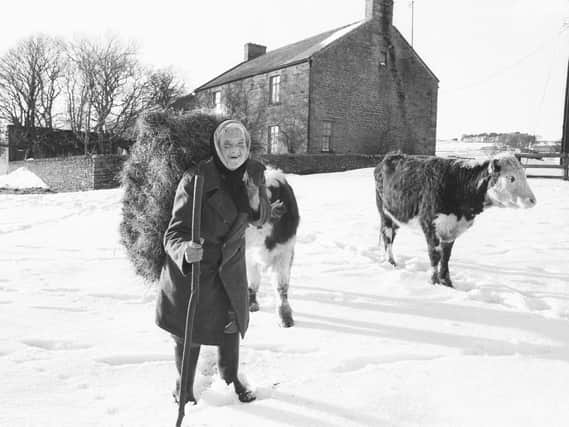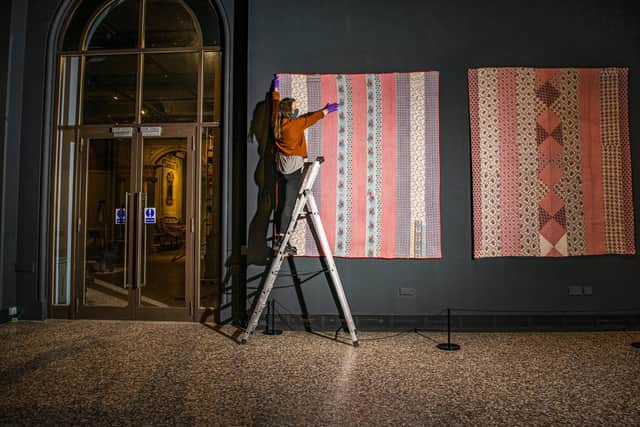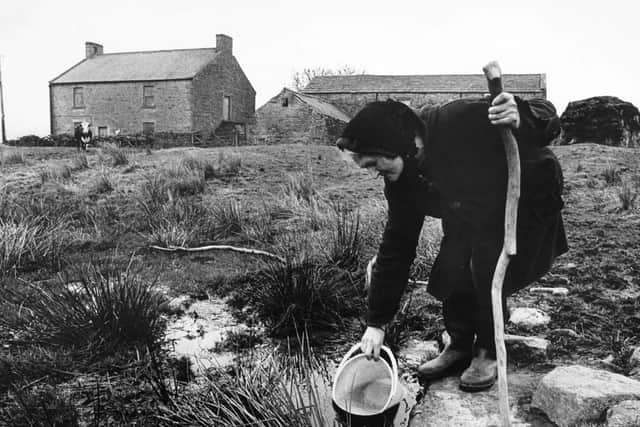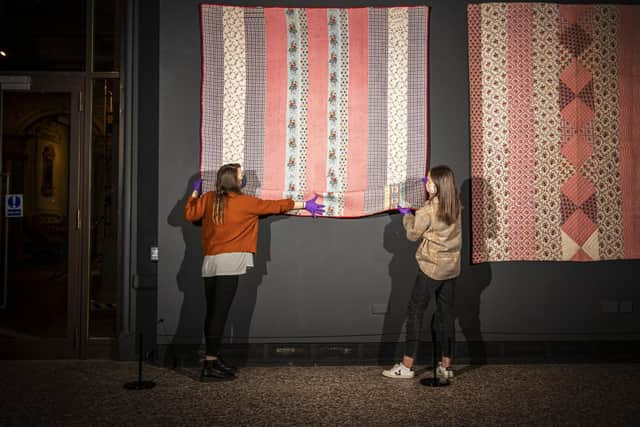Hannah Hauxwell's tale told through the history of her grandmother's quilt in new exhibition at The Bowes Museum


Now, as one of the few treasures she cherished in her final years is brought to public viewing, it sheds new insight into a long thought lost way of life.
Her grandmother's strippy quilt, for decades hidden in a linen box at the famed Baldersdale farm, is to feature in an exhibition at The Bowes Museum to celebrate North Country quilts.
Advertisement
Hide AdAdvertisement
Hide AdThese woven strips of 19th century cotton, lovingly preserved, have raised as many questions as they answered, curators have said, delving into the social fabric of their cultural heritage.


"It would have been a hard life, not only for Hannah Hauxwell but particularly in her grandmother's time," said Joanna Hashagen, the museum's curator of fashion and textile.
"It's that provenance, that history, that makes it so interesting."
Hannah Hauxwell, last of her family left to tend the farm alone, shot to fame through a Yorkshire Television documentary in 1973 called Too Long a Winter.
Advertisement
Hide AdAdvertisement
Hide Ad

As she chipped through ice on a trough for her beasts to eat through bleak, uncompromising cold, she had come to represent a simpler way of life and a doughty determination to survive.
Having farmed alone at Low Birk Hatt without running water or electricity since the age of 34, she had been no stranger to hardship, or to the loneliness of isolation.
But when she was forced to downsize, moving to a cottage in Cotherstone in the Teesdale hills, a linen press holding a collection of handmade quilts was among the items she chose to keep.
One of these, auctioned by Tennants following her death in 2018 at the age of 91, was engraved with her grandmother Elizabeth Bayles' initials, and had caught the eye of The Bowes Museum.
Advertisement
Hide AdAdvertisement
Hide Ad

She would have wanted the quilt regardless of its famous owner, said Ms Hashagen, purely because the museum has no such examples of Teesdale quilting in its extensive collection.
Armed with a small pot of money gifted in donation, and having sought backing from private donors, she had taken a gamble on the quilt at auction, even as it trebled its estimate of £300 to £500 as the most sought after item in the lot.
Ever since, it has been a matter of unravelling the clues in its cloth as to its creation.


Printing strips suggest cloth ends bought as scraps, while red wool has been 'nibbled', perhaps by moths, and signifies an earlier wool grade than expected, which dates to around the 1860s.
Advertisement
Hide AdAdvertisement
Hide AdDelving into the family census, curators can see more. A teenage Elizabeth is listed in the 1880s, and there are later details of a lodger who would become Ms Hauxwell's grandfather.
Social history
Dorothy Osler, an independent scholar and consultant who worked on the exhibition, doesn't believe it to be a quilt made for their marriage but rather before, as an everyday item which was passed down among the generations.
"I don't think they ever had any great value," she said. "They were, in a sense, a comfort and creative outlet, as they took a long time to make.
"Quilting was a craft, something it was useful to spend time doing. But because it was 'women's work' there was a perceived lack of cultural value," she added.
Advertisement
Hide AdAdvertisement
Hide Ad"The only clue I have came from my own mother. She could never understand my interest in quilts, they were just 'common', superseded by eiderdowns as the posher equivalent."
For Ms Hashagen, the quilt makes a valuable addition to the exhibition, in detailing a rare insight into a way of life within deeply rural farming communities.
"There's still mysteries, there's still research to do," she added. "There are always questions, that's what makes it so interesting. It's like archeology, stripping away the layers."
Exhibition
Curators have been working on the exhibition since September, with The Bowes Museum, first in the country to present quilting as art in 1963, celebrating its collection over the past 20 years.
Advertisement
Hide AdAdvertisement
Hide AdFeaturing the finest quilting traditions of northern England over 200 years, catalogues also detail the stories behind each piece and the cultural traditions of their distinctive styles.
The exhibition opens at the Barnard Castle museum on Monday, May 17, and will run until September 19.
________________________________
Support The Yorkshire Post and become a subscriber today. Your subscription will help us to continue to bring quality news to the people of Yorkshire. In return, you'll see fewer ads on site, get free access to our app and receive exclusive members-only offers. Click here to subscribe.
